Coffee
written by Brian Lien @_bincoffee
Where it began
I’ve always been a coffee drinker, though I didn’t realize it back then. I can still remember begging my dad for a sip of his black coffee, brewed on that old Mr. Coffee machine with a splash of vanilla creamer. That first taste—the bitter warmth of it—made me feel part of something bigger, and I loved it.
As the years passed, coffee became more than just a drink. It was there during late-night study sessions, shared with friends in quiet cafés, and in conversations that, though fleeting, meant everything. Coffee wasn’t just a beverage; it was a language, a way of connecting.
Eventually, after leaving my barista job and starting my full-time career, I felt a quiet pull to brew at home. It was my way of slowing down in a world that never stopped. With every imperfect cup, I realized it wasn’t just about the coffee—it was about the memories, the rituals, and the small moments that made life feel real.
How to get started: From a home barista
In general, I always recommend telling folks to start with a simple dripper. Something like a V60, Chemex, or French Press. Or even a Moka Pot for a close alternative to espresso.
The next is investing in a good quality grinder. There’s nothing better than brewing freshly ground coffee. In technical terms, once coffee beans are ground, they rapidly begin to oxidize, exposing their oils and aromas to air, which significantly diminishes their flavor within minutes to hours of grinding.
And lastly, although I totally missed this in my video (haha), getting a precision scale. This helps you test different ratios and ensure a consistent, quality cup of coffee every single time.
Everything else is optional in my honest opinion! In my early days, I bought a very cheap gooseneck kettle, a Hario V60, and a hand grinder, a timemore scale, and never looked back. It was fun experimenting with different roasts and beans, seeing what I like and testing new recipes. I probably had that set up for a few years before my partner gifted me my very first espresso machine.
Choosing the beans
This is my attempt to give a crash course on beans. There’s still a ton I want and need to learn, but here’s what I’ve picked up over the years.
Coffee beans are basically the seeds of the coffee plant, and their flavor can vary a lot depending on where they're grown, how they're processed, and how they're roasted. The two main types are Arabica and Robusta. Arabica beans are usually smoother and more complex, with flavors that can range from fruity and floral to nutty, while Robusta beans are stronger, with a bolder, sometimes earthy taste and more caffeine (commonly used for viet coffee or cà phê sữa đáá. Arabica is often grown in higher-altitude regions like Ethiopia and Colombia, while Robusta tends to come from lower elevations like Vietnam and parts of Africa.
If you're into trying different flavors, single-origin coffee is the way to go. These beans come from a specific region or a single farm, so you can really taste the unique flavors that come from that place. On the other hand, blends mix beans from different regions to create a more balanced flavor, which is great if you like something consistent. It’s like getting a strawberry smoothie vs strawberry banana smoothie – both good, one’s focused and one’s a blend. Finding your favorite coffee is a bit like trying new foods—there's no one-size-fits-all. What I like to do when I taste coffee is notice—how sweet or acidic it is, how heavy or light the body feels, and how long the taste lingers after you drink it. You might find you prefer lighter roasts, which show off the beans' natural flavors, or darker roasts that have more of a smoky, chocolatey kick. Maybe you like beans from Colombia, which is more medium bodied, with citrus and floral notes, or maybe Indonesian coffee, which tends to be more deep and earthy. Keep experimenting and you’ll start to know what you enjoy (spoiler: I’m a fan of indo-pacific beans, medium/dark roasts!).
Getting started with espresso
Welcome to the world of espresso :-) getting into brewing espresso-based drinks at home really fueled my creativity and leveled up my (already) strong passion for coffee. But how do you even get started with espresso?
There are so many espresso machines out there, and you don’t need a “high-quality” expensive machine. Affordables ones like the Flair Neo Flex (manual, lever pull), Breville Bambino, Gaggia Classic Pro, Casabrews, or anything similar would fare just fine.
Just like what I said above, investing in a good quality espresso grinder I would say is critical. The Baratza ESP is a great choice to get started, but there are plenty of others out there as well.
So let’s say you have the machine, you have a grinder, you just bought freshly roasted coffee beans at your local coffee shop. Now’s time for the fun part: testing, trialing, optional accessorizing, and tasting.
To brew, you'll need to measure out the right amount of coffee—typically around 17-20 grams for a double shot. You may have seen a lot of “puck preps” on social media – this involves things like spraying the beans (to reduce static before grinding), WDT-ing (to spread out coffee grinds evenly), distributing (creates an even spread of grounds), and then tamping. All the things I’ve mentioned are all helpful to dial in your shot to your liking, and prevents “channeling” which is when water flows through gaps in the coffee puck during the espresso extraction process. But the fundamentals and main requirement is tamping – firmly, with enough pressure, and evenly into the portafilter. The rest can be added as you start experimenting!
Once everything is set up, lock the portafilter into the machine, hit the button (or pull the lever, if you’re using a manual machine), and watch the magic happen. The key is practice—adjusting grind size, tamping pressure, and brewing time, and puck prep to dial in the flavor that works for you. You should ideally get double the amount of espresso in weight (so if you used 18g of beans, you’d want to brew 36g of liquid espresso within 25-30 seconds). There’s honestly no hard and fast rule to the ratios – try a few (or a lot) and see what you like. It might take a little trial and error at first, but the reward is a rich, smooth shot of espresso that you can enjoy as is, or use as a base for lattes, cappuccinos, or other coffee drinks.
Thanks for watching and reading!
Feel free to hit me up with any questions :)
Instagram: _bincoffee
TikTok: bbbblien
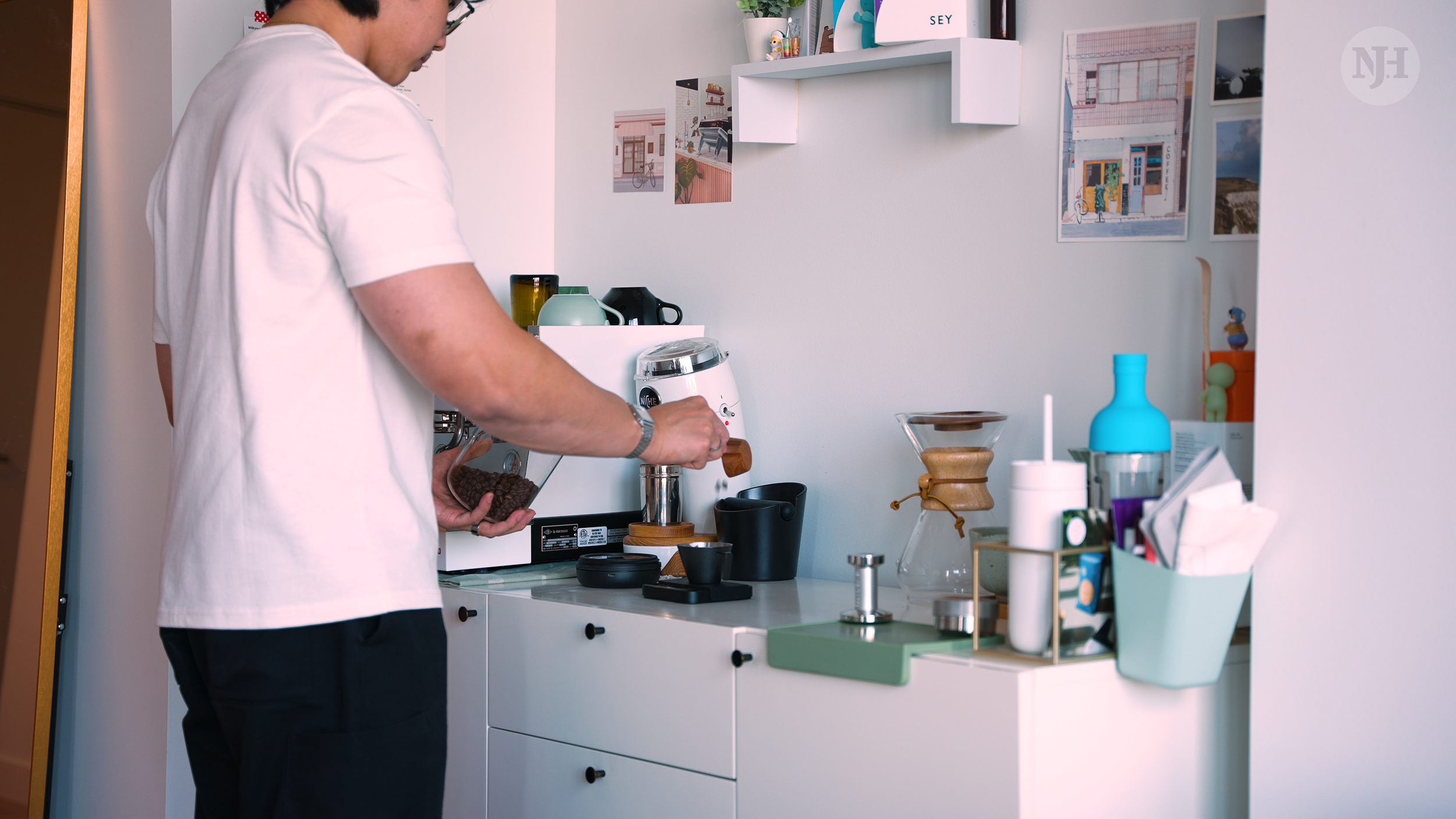
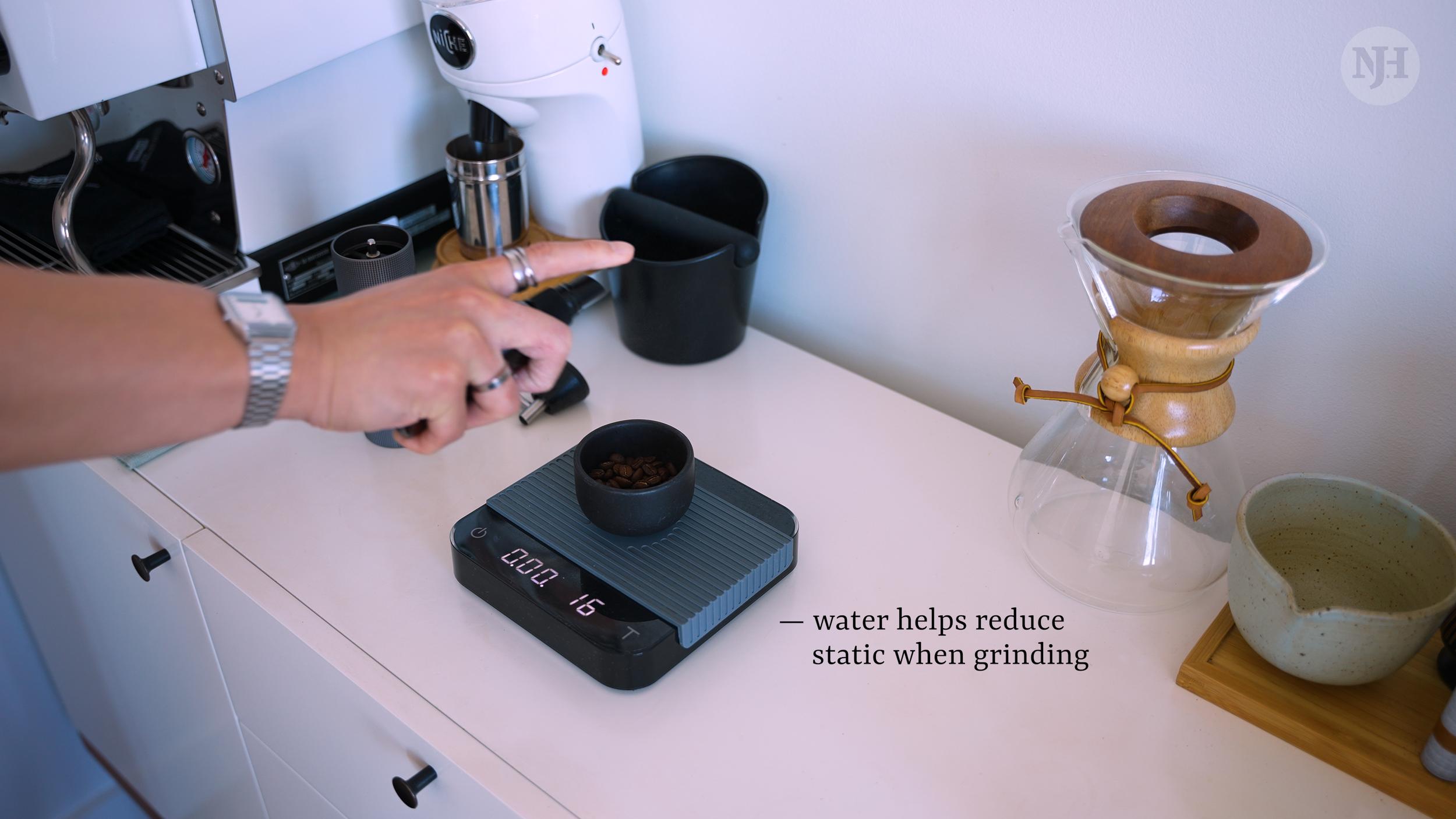
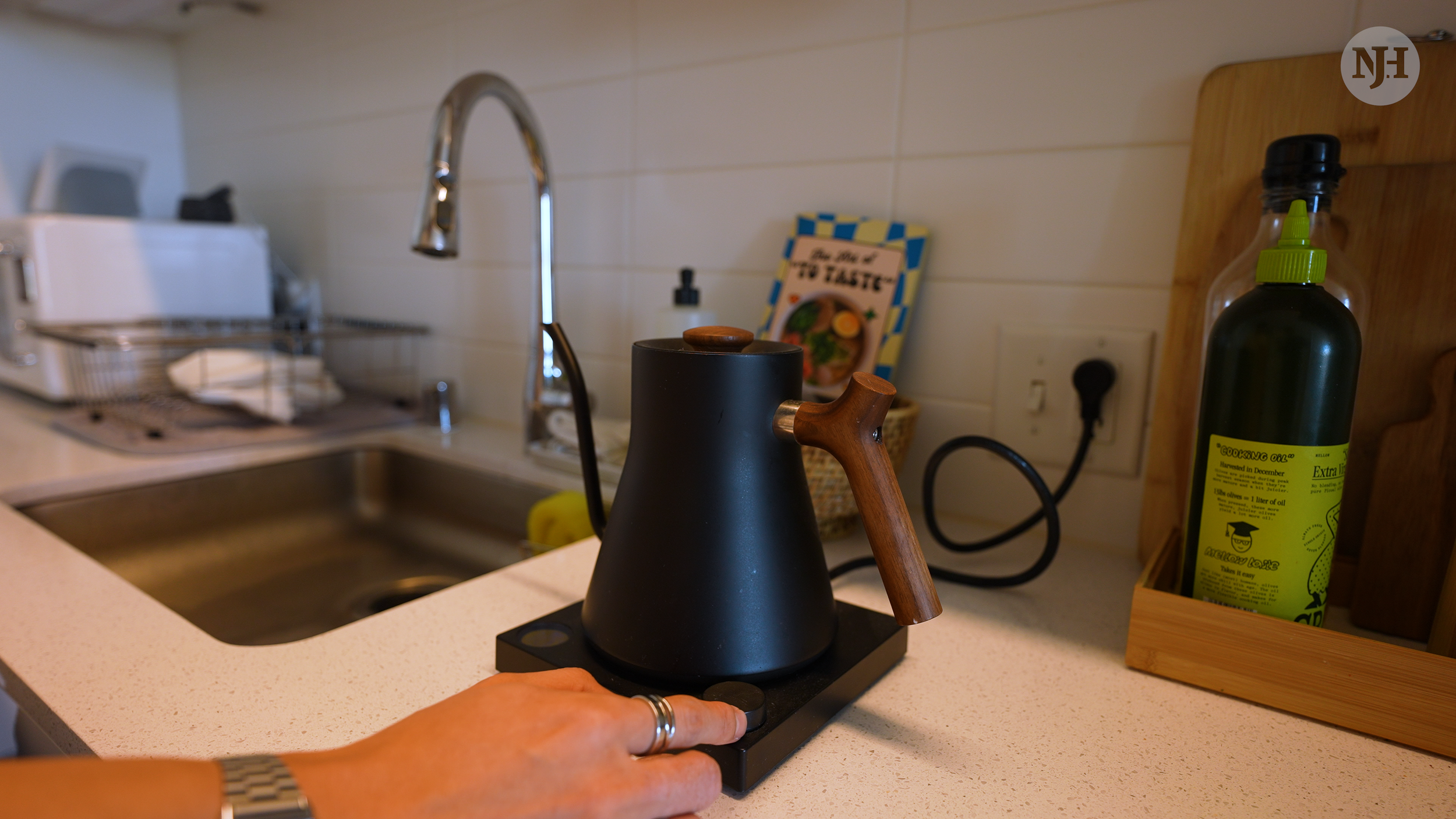
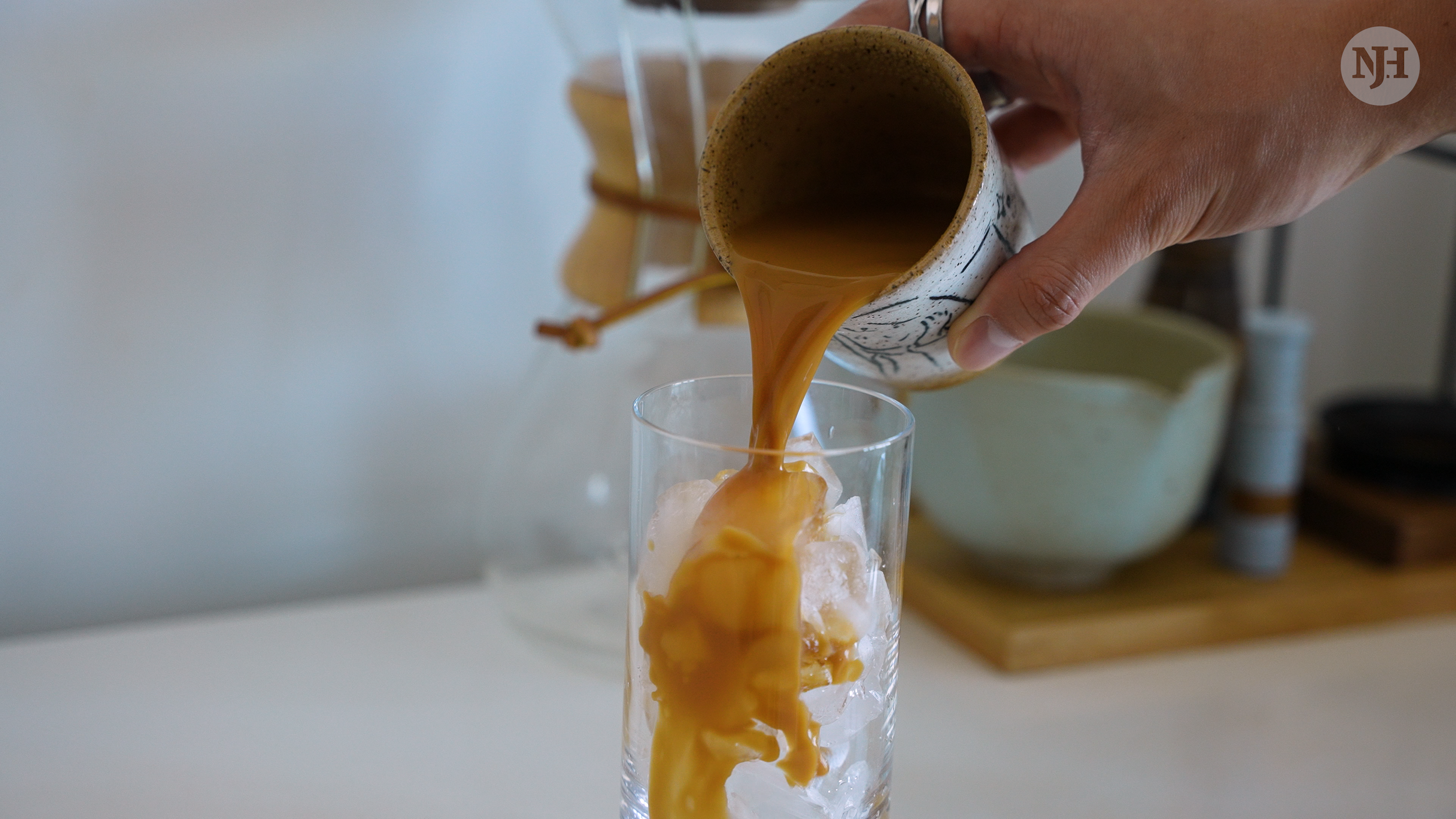
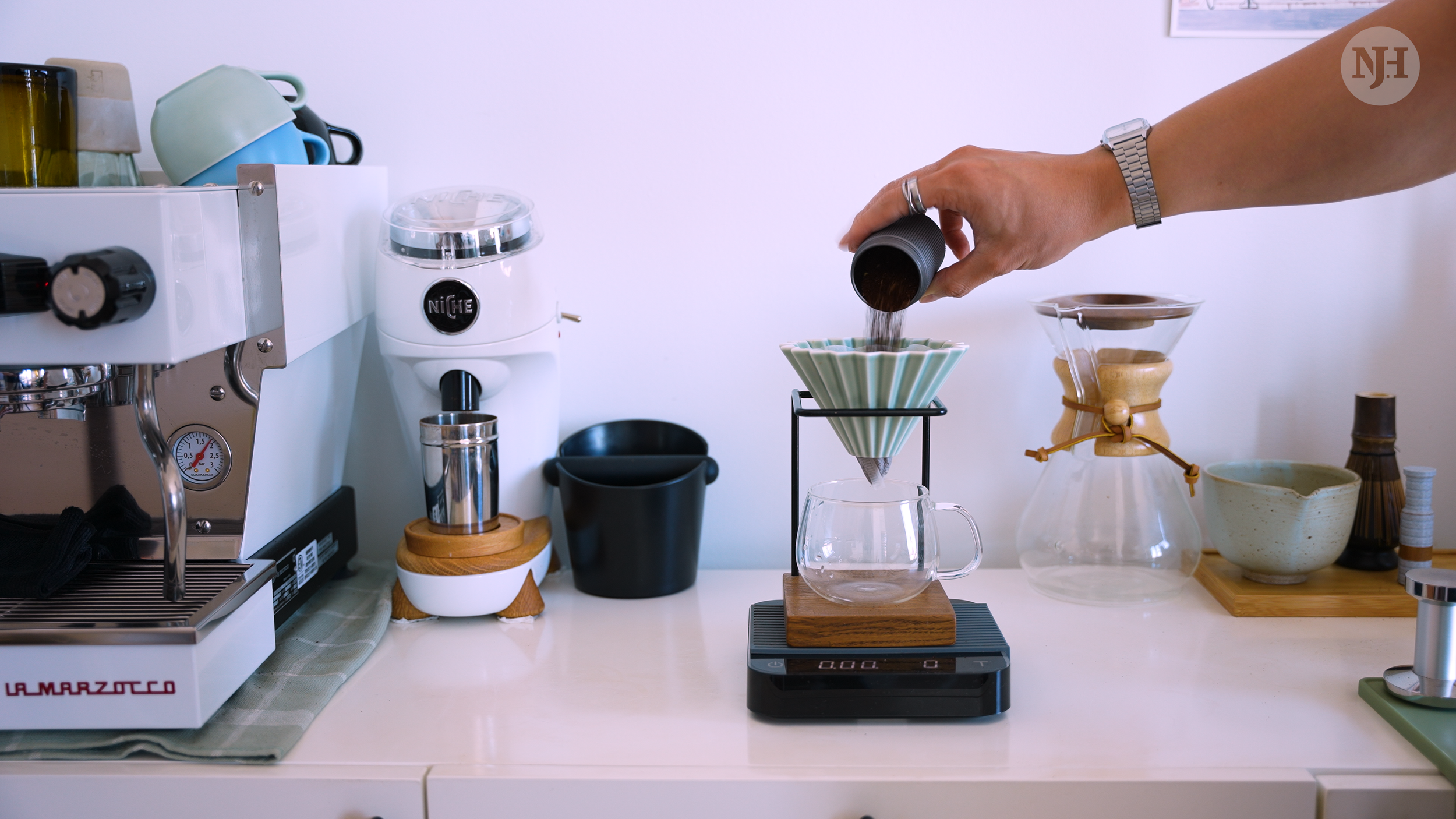
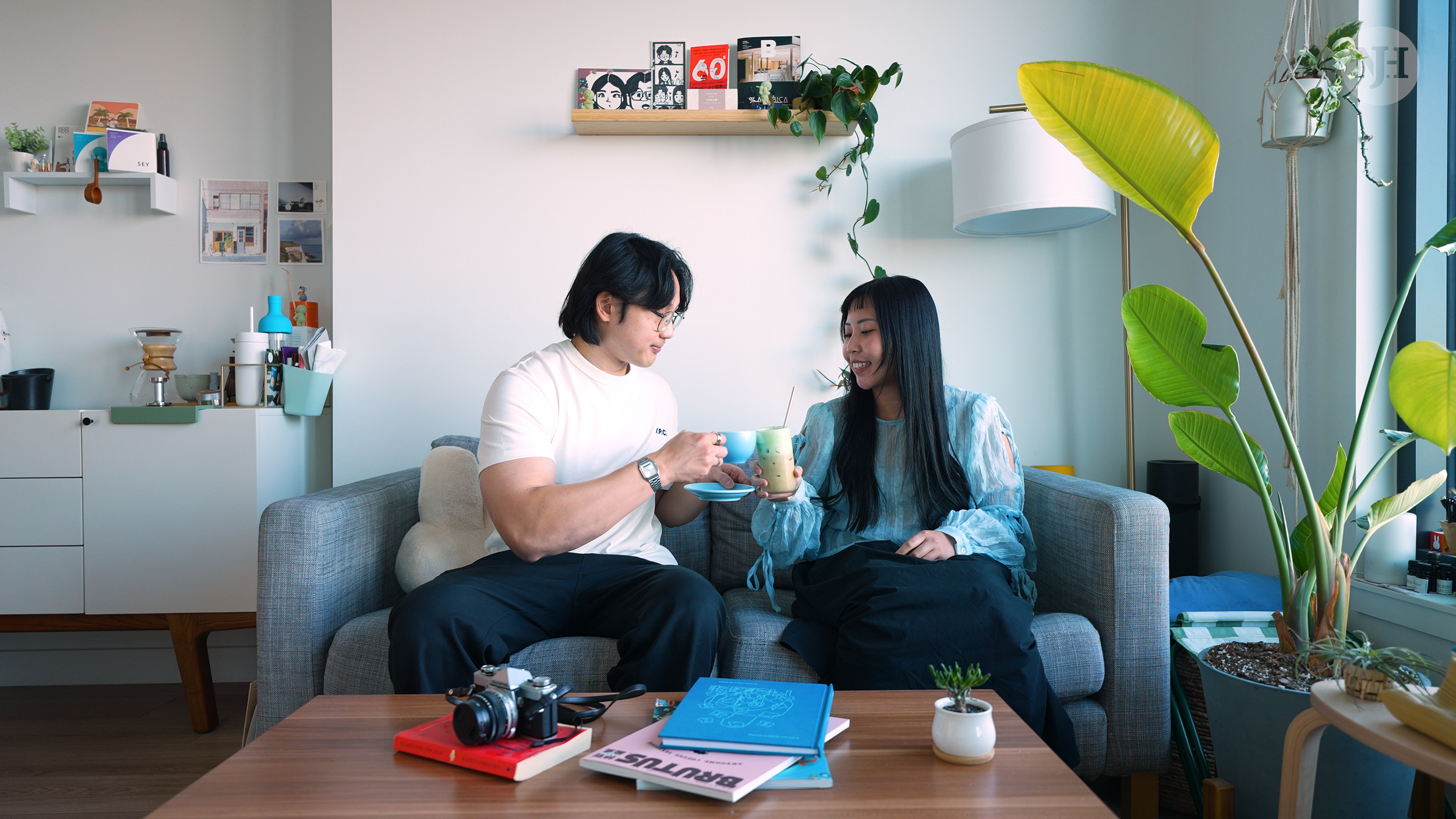
From beverage
to hobby.
Coffee is almost as normal of a drink as water.
Yet, there’s so much more to it than the caffeine and the handful of mixtures we’re all privy too.
Brian started like many others, then took the dive in to try more types of coffee — unlocking a whole new world.
Try new coffee
A point Brian mentions that deserves another emphasis is to try new coffees. You’ll never know what else you like unless you try it.
And there is so many variations and types found in coffee. New combinations that may sound strange. New additions you would never normally add.
Keep an open mind. You just have to take one sip.
Discover more hobbies.
Discover more of Brian’s coffee on Instagram @_bincoffee and TikTok @bbbblien.








